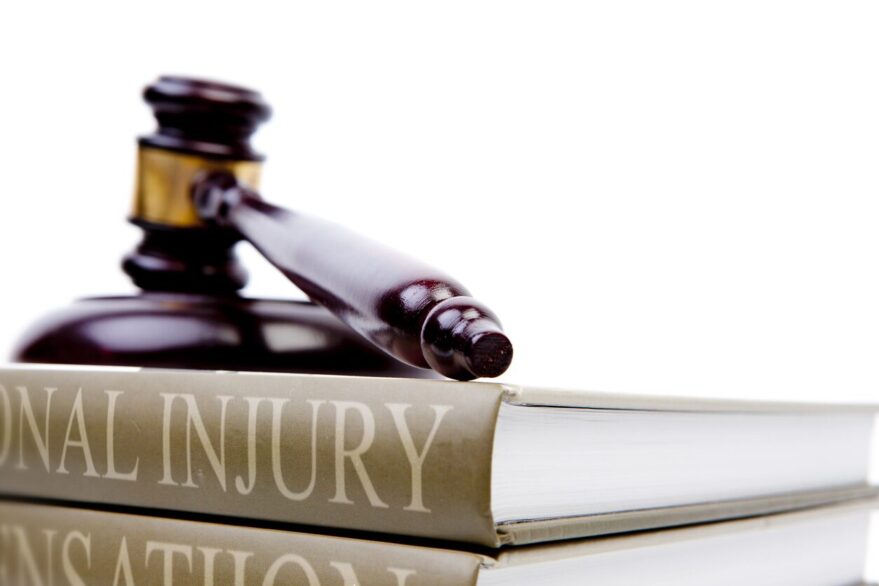Examples of Proximate Cause in a Personal Injury Case

When someone is injured in an accident, the law does not automatically assume that another party is financially responsible. Instead, personal injury claims require proof of negligence, which is built on four elements: duty, breach, causation, and damages.
Among these, causation often becomes one of the most debated aspects of a case. In particular, the concept of proximate cause plays a central role in determining whether a defendant’s actions are legally connected to the plaintiff’s injuries.
This article explains what proximate cause means, why it matters, and provides real-world examples of how courts evaluate it in personal injury cases.
What is Proximate Cause?
In legal terms, proximate cause is the event that is sufficiently related to an injury to be considered the legal cause of that injury. Unlike “actual cause” (also called “cause in fact”), which asks whether the injury would have occurred “but for” the defendant’s actions, proximate cause places limits on liability. It asks whether the harm was a foreseeable consequence of the defendant’s conduct.
The idea is rooted in fairness. Even if someone’s actions set off a chain of events leading to injury, they may not be held liable if the outcome was too remote, unusual, or unforeseeable. Courts use proximate cause to prevent endless liability for every consequence of a negligent act.
Why Proximate Cause Matters in Personal Injury Claims?
Without proximate cause, the legal system could hold defendants responsible for outcomes that no reasonable person could have predicted. For example, if a driver runs a red light and collides with another car, it is foreseeable that the occupants could suffer injuries. However, if a lightning strike hits a bystander drawn to the scene minutes later, the negligent driver would not be legally responsible for that unrelated and unforeseeable harm.
Proximate cause ensures that only injuries closely tied to the defendant’s negligence result in liability. This doctrine allows courts to draw a reasonable line between actions and consequences.
Example 1: A Rear-End Car Accident
One of the clearest examples of proximate cause arises in rear-end car collisions. Imagine a driver who is texting while approaching a red light. Because of the distraction, they fail to stop in time and crash into the car in front of them. The driver in the struck vehicle suffers whiplash and a concussion.
Here, proximate cause is straightforward. It is entirely foreseeable that failing to stop at a red light could result in an accident and physical injuries. The negligent act of texting while driving directly and predictably caused the harm.
Example 2: Slip and Fall in a Grocery Store
Consider a grocery store that fails to clean up a spilled liquid in one of its aisles. A customer slips, falls, and breaks their wrist. Proximate cause is established because it is foreseeable that leaving a slippery surface unattended could cause someone to fall and sustain injuries.
Now, imagine the customer falls and drops their cell phone, which slides across the aisle and causes another shopper to trip, breaking their leg. Is the grocery store liable for the second injury? Likely yes, because it is still reasonably foreseeable that failing to clean up a spill could cause a chain reaction of falls in a crowded space.
But if the dropped phone somehow activated a nearby machine, which then caused an unrelated fire, liability would likely end there. That outcome would be too remote and unforeseeable.
Example 3: Medical Malpractice After a Car Accident
Sometimes proximate cause involves multiple layers of negligence. Suppose a person is hit by a drunk driver and rushed to the hospital. While receiving treatment, the hospital staff makes a mistake during surgery, worsening the injuries.
The drunk driver’s negligence is still considered the proximate cause of the victim’s overall harm, even though medical malpractice occurred later. Courts generally treat negligent medical care as a foreseeable consequence of needing emergency treatment after an accident. Thus, the driver can be held liable not just for the initial injuries but also for the aggravated harm caused during treatment.
Foreseeability and Unforeseen Events
The heart of proximate cause is foreseeability. Courts ask: Would a reasonable person have anticipated that this type of harm could result from the negligent act?
For instance, if a driver negligently parks on a steep hill without using the emergency brake and the car rolls down, hitting a pedestrian, liability is clear. But if the car rolls several blocks, crashes into a utility pole, and triggers a blackout that delays medical treatment for hospital patients, the question becomes harder. At some point, the chain of causation becomes too attenuated for the driver to remain liable.
How does Proximate Cause Play a Role in Proving Negligence in a Personal Injury Case?
To win a personal injury case, the plaintiff must show both actual cause and proximate cause. Actual cause is relatively easy: “but for” the defendant’s actions, the injury would not have occurred. Proximate cause, however, requires showing that the harm was a natural and foreseeable result of those actions.
Defendants often challenge proximate cause to limit liability, arguing that the injuries were too remote, caused by intervening factors, or otherwise unforeseeable. Plaintiffs, in turn, must present evidence that connects the defendant’s actions to the harm in a direct and predictable way.
Why Proximate Cause Matters
Proximate cause serves as a guardrail in personal injury law, ensuring fairness by holding people accountable only for the foreseeable consequences of their actions. From car crashes to slip and falls, medical errors, workplace hazards, and alcohol-related accidents, the principle of proximate cause shapes whether victims can recover damages.
Understanding this concept is essential for anyone pursuing a personal injury claim. An experienced personal injury lawyer can help victims analyze the facts of their case, identify proximate causes, and build strong arguments to establish liability. By doing so, injured parties can improve their chances of securing fair compensation for the harm they have suffered.
Contact Zaner Law Personal Injury Lawyers for a Free Consultation
If you or a loved one has been injured in an accident caused by someone else’s negligence, you do not have to face the legal system alone. The team at Zaner Law Personal Injury Lawyers is ready to listen to your story, explain your rights, and pursue the compensation you deserve.
Contact us today to schedule your free consultation and take the first step toward recovery with experienced advocates by your side.
For more information, contact the Denver personal injury lawyers at Zaner Law Personal Injury Lawyers to schedule a free initial consultation with a Denver personal injury lawyer.
We are located in Denver, CO, proudly serving all of Denver County.
Zaner Law Personal Injury Lawyers
1610 Wynkoop Street, Suite 120
Denver, CO 80202
(720) 613 9706


